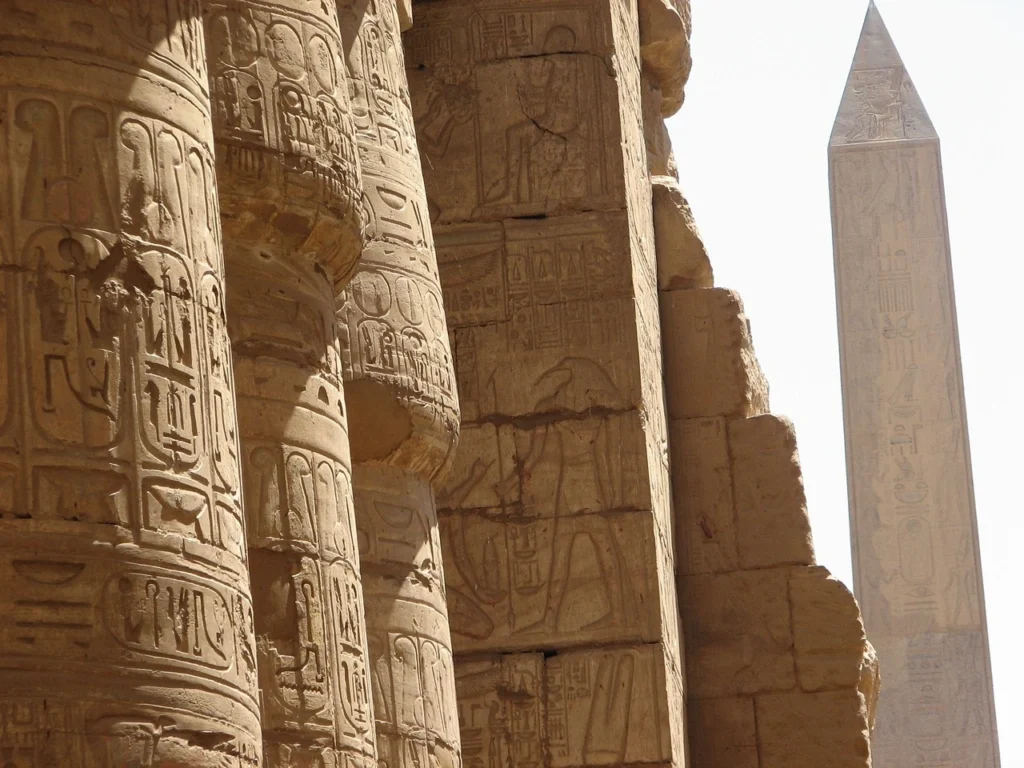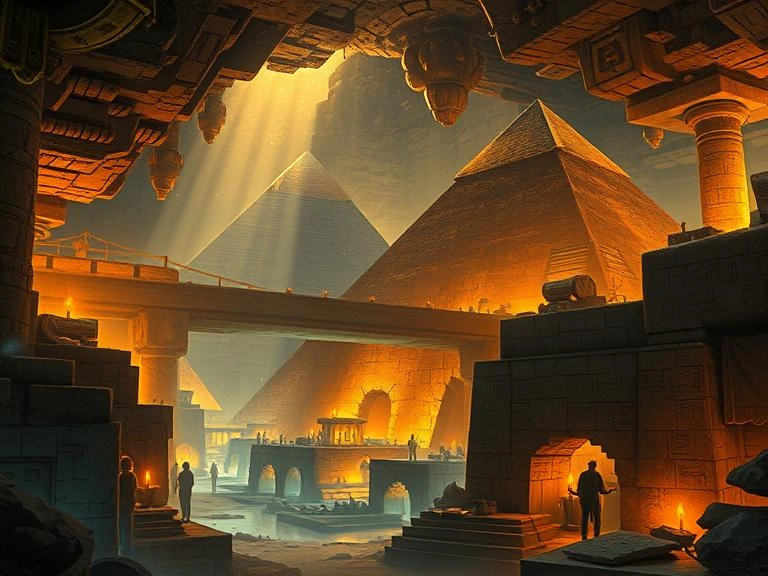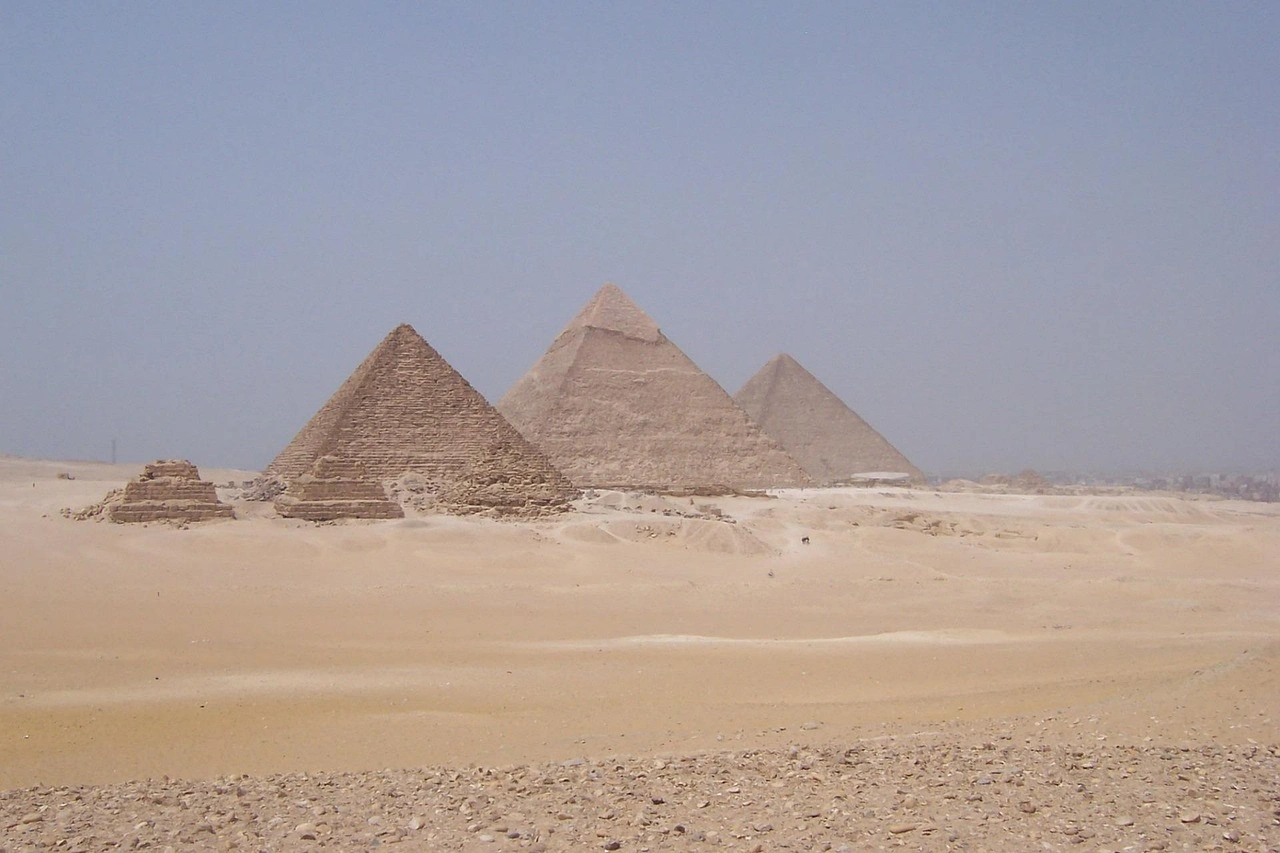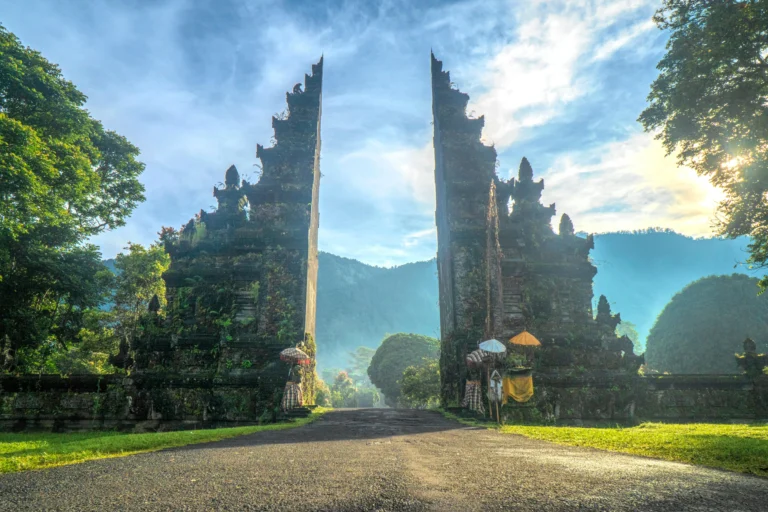Unraveling the Enigma: The Mysterious Underground City Beneath the Pyramids of Giza
A Journey into Archaeological Mystery
Picture yourself standing in the scorching Egyptian desert, the colossal pyramids of Giza looming before you, their ancient stones holding secrets centuries old. What if beneath your feet lies an entire hidden world—an underground city waiting to be discovered? The possibility sends shivers down the spine of historians, archaeologists, and adventure seekers alike.
The Allure of the Unknown
For generations, the pyramids have captivated human imagination. These monumental structures are more than just tombs; they are enigmatic portals to an advanced civilization that continues to challenge our understanding of human history. The whispers of a potential underground city beneath the Giza pyramid complex have only intensified the mystique surrounding these incredible monuments.
Historical Tapestry: The Giza Pyramid Complex
A Glimpse into Ancient Egyptian Engineering
The Giza pyramid complex represents the pinnacle of ancient Egyptian architectural and engineering prowess. Constructed during the Fourth Dynasty of the Old Kingdom period (approximately 2613 to 2494 BCE), these structures were far more than simple burial sites:
- The Great Pyramid of Khufu stands at 146.5 meters (481 feet)
- Comprised of an estimated 2.3 million limestone blocks
- Each block weighing an average of 2.5 tons
- Aligned with remarkable astronomical precision
“The pyramids are not just monuments, but a testament to human ingenuity and cosmic understanding.” – Dr. Zahi Hawass, renowned Egyptologist
Known Underground Structures
While the underground city remains speculative, the Giza complex does feature some confirmed underground elements:
- Descending Passage: A narrow corridor leading into the bedrock beneath the Great Pyramid
- Subterranean Chamber: An unfinished underground room within the Great Pyramid
- Narrow Tunnels: Various smaller passages connecting different sections of the pyramid
Theories and Legends: Exploring the Underground City Concept
Origins of the Underground City Theory
The concept of a hidden underground city has multiple potential origins:
Ancient Legends
Local folklore and ancient texts hint at vast underground networks:
- Stories of secret chambers passed through generations
- Mystical accounts of hidden knowledge preserved beneath the sand

Alternative Historical Interpretations
Researchers like Graham Hancock and Robert Bauval have proposed theories suggesting:
- Advanced prehistoric civilizations
- Potential technological capabilities beyond current archaeological understanding
- Hidden repositories of ancient wisdom
Alleged Evidence and Claims
Geophysical Surveys and Technological Investigations
Several investigations have fueled the underground city speculation:
| Research Method | Findings | Credibility |
|---|---|---|
| Ground-Penetrating Radar | Anomalous underground structures detected | Moderate |
| Thermal Imaging | Unexplained temperature variations | Low to Moderate |
| Seismic Mapping | Potential large-scale underground cavities | Speculative |
Christopher Dunn’s Perspectives
Christopher Dunn, an engineer and alternative archaeology researcher, has been instrumental in promoting the underground city theory. His key arguments include:
- Advanced machining techniques evident in pyramid construction
- Potential technological infrastructure beyond traditional archaeological interpretations
- Precise engineering suggesting complex underground systems
Note: Readers can explore Dunn’s detailed research at Christopher Dunn’s Official Website
Scientific Skepticism and Critical Perspectives
Mainstream Archaeological Views
Most Egyptologists remain skeptical about the underground city theory due to:
- Lack of conclusive archaeological evidence
- Technological limitations in comprehensive underground exploration
- No peer-reviewed scientific documentation supporting extensive underground networks
Challenges in Exploration
Archaeological investigations in the Giza area face significant obstacles:
- Dense, historically sensitive terrain
- Potential structural instability
- Complex geological conditions
- Limited non-invasive exploration technologies
Global Context: Underground Structures Worldwide
To provide perspective, similar underground structures exist globally:
Egypt
- Serapeum of Saqqara: Complex underground burial chambers
- Valley of the Kings: Extensive tomb networks
International Examples
- Cappadocia, Turkey: Multi-level underground cities
- Derinkuyu Underground City: Massive subterranean settlement
- Malta’s Hypogeum: Prehistoric underground complex

Future of Exploration: Technologies and Potential
Emerging Archaeological Technologies
Promising technologies for future investigations include:
- Advanced 3D ground-penetrating radar
- Quantum sensing techniques
- AI-powered archaeological mapping
- Non-invasive subsurface imaging
Conclusion: A Mystery Perpetually Unfolding
The underground city beneath the pyramids remains an open question—a tantalizing mystery that continues to inspire researchers and capture public imagination. While current evidence doesn’t conclusively prove its existence, the possibility remains tantalizingly open.
Key Takeaways
- The underground city theory remains unproven but intriguing
- Multiple perspectives exist within archaeological communities
- Future technological advances might provide definitive answers
Dive Deeper: Recommended Resources
- Books:
- “Fingerprints of the Gods” by Graham Hancock
- “The Giza Power Plant” by Christopher Dunn
- Documentaries:
- “Magical Egypt” series
- National Geographic’s pyramid exploration documentaries
- Academic Resources:
- Journal of Egyptian Archaeology
- Archaeological Institute of America publications
Disclaimer: This article represents current research and speculation. Always approach such theories with critical thinking, scientific skepticism, and an open mind.
Explore. Question. Discover.







